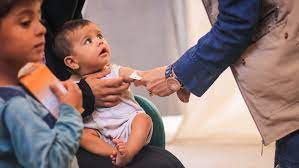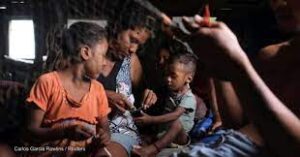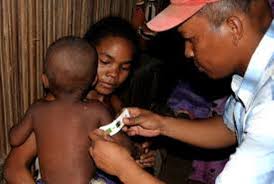Discover a groundbreaking step in child health as the New WHO Guidelines Combat Child Malnutrition. In a global effort to safeguard the youngest members of our society, the World Health Organization has unveiled a comprehensive plan to address this critical issue. Imagine a world where every child has the opportunity to grow and thrive without the shadow of malnutrition. The WHO’s fresh directive offers hope, providing a roadmap for communities, parents, and healthcare professionals to work hand in hand in the battle against acute malnutrition. Let’s delve into the details and explore a future where no child is left behind.

Introduction:
Acute malnutrition in children under five remains a critical global health issue, contributing to a significant number of preventable deaths. The World Health Organization (WHO) has recently released new guidelines aimed at tackling this problem head-on. This guide delves into the various aspects of the WHO’s initiative, from understanding the problem to implementing strategies, assessing impacts, involving stakeholders, allocating funds and resources, leveraging technology and innovation, and ensuring sustainability.
Understanding the Problem:
Acute malnutrition in young children is a complex issue with multifaceted causes, including inadequate nutrition, infectious diseases, and socioeconomic factors. The consequences can be severe, affecting physical and cognitive development. Understanding the root causes and risk factors is crucial for developing effective interventions.

WHO’s Initiative:
The World Health Organization has taken a proactive stance in addressing acute malnutrition in children under five. The new guidelines focus on evidence-based approaches, drawing on the latest research and best practices. The initiative emphasizes a comprehensive and integrated approach to ensure a holistic response to the problem.
Implementation Strategies:
Implementing the WHO guidelines requires a coordinated effort among healthcare professionals, governments, NGOs, and local communities. Strategies include scaling up nutrition programs, strengthening healthcare systems, and integrating nutrition interventions into existing health services. The guidelines emphasize community-based approaches to increase accessibility and effectiveness.
Impact Assessment:
Regular and systematic impact assessments are essential to evaluate the effectiveness of interventions. The WHO recommends monitoring key indicators such as nutritional status, mortality rates, and developmental milestones in affected children. Continuous assessment allows for timely adjustments and improvements in the implementation process.
Stakeholder Involvement:
Involving a diverse range of stakeholders is critical for the success of any initiative. Governments, healthcare providers, community leaders, and international organizations play vital roles in the fight against acute malnutrition. Collaborative efforts ensure a comprehensive and sustainable approach, fostering a sense of ownership and accountability.
Funding and Resource Allocation:
Adequate funding and resource allocation are imperative to implement the WHO guidelines effectively. Governments, donors, and international organizations must prioritize and allocate resources to support nutrition programs. Transparent financial management and accountability mechanisms are essential for the sustained success of the initiative.
Technology and Innovation:
Leveraging technology and innovation can enhance the efficiency and reach of interventions. Mobile applications, data analytics, and telemedicine can be employed to streamline communication, monitor progress, and provide real-time support to healthcare workers and communities. Innovation plays a crucial role in overcoming logistical challenges and improving the overall impact of interventions.
Sustainability:
Ensuring the sustainability of interventions is a key consideration in the fight against acute malnutrition. Capacity building, community engagement, and integration into existing healthcare systems contribute to long-term success. The WHO emphasizes the importance of building local capacity and empowering communities to take ownership of nutrition initiatives.
Conclusion:
In conclusion, the issuance of new guidelines by the World Health Organization (WHO) to address acute malnutrition in children under five marks a significant step towards enhancing global efforts to combat this pressing health issue. By providing a comprehensive framework for healthcare professionals, policymakers, and communities, these guidelines serve as a valuable resource to improve the identification, management, and prevention of acute malnutrition in the most vulnerable age group.
The WHO’s commitment to refining and updating guidelines underscores the dynamic nature of healthcare challenges and the need for adaptive strategies. Through a multi-faceted approach that encompasses nutritional interventions, health education, and community engagement, these guidelines not only target the immediate treatment of malnourished children but also strive to create sustainable solutions for long-term well-being.

FAQS:
Q1:WHO guidelines for the treatment of malnutrition:
The World Health Organization (WHO) provides comprehensive guidelines for the treatment of malnutrition, encompassing various aspects such as nutritional rehabilitation, medical care, and psychosocial support. These guidelines aim to address both the immediate and underlying causes of malnutrition, offering a framework for healthcare professionals to deliver effective and evidence-based interventions.
Q2:WHO criteria for malnutrition in children:
The WHO utilizes growth standards known as the WHO Child Growth Standards to assess the nutritional status of children. Malnutrition is often determined by evaluating key indicators such as stunting (low height-for-age), wasting (low weight-for-height), and underweight (low weight-for-age). These criteria help identify children who may be at risk or are already experiencing malnutrition, enabling timely intervention and support.
Q3:WHO guidelines on the management of waste:
The WHO has specific guidelines addressing the management of wasting, which is characterized by a rapid loss of weight and muscle tissue. The guidelines focus on a multi-faceted approach, including nutritional rehabilitation, medical care, and community-based interventions. By emphasizing early detection and prompt treatment, the WHO aims to reduce the impact of waste on children’s health and development.
Q4:What is severe acute malnutrition in children under 5?
Severe acute malnutrition (SAM) in children under 5 is a critical condition characterized by extremely low weight for height (wasting) and/or low mid-upper arm circumference. SAM poses a severe threat to a child’s health and survival and is often associated with medical complications. The WHO has established specific criteria for the diagnosis and management of severe acute malnutrition, guiding healthcare providers in delivering appropriate and timely interventions to prevent further deterioration and improve outcomes for affected children.
